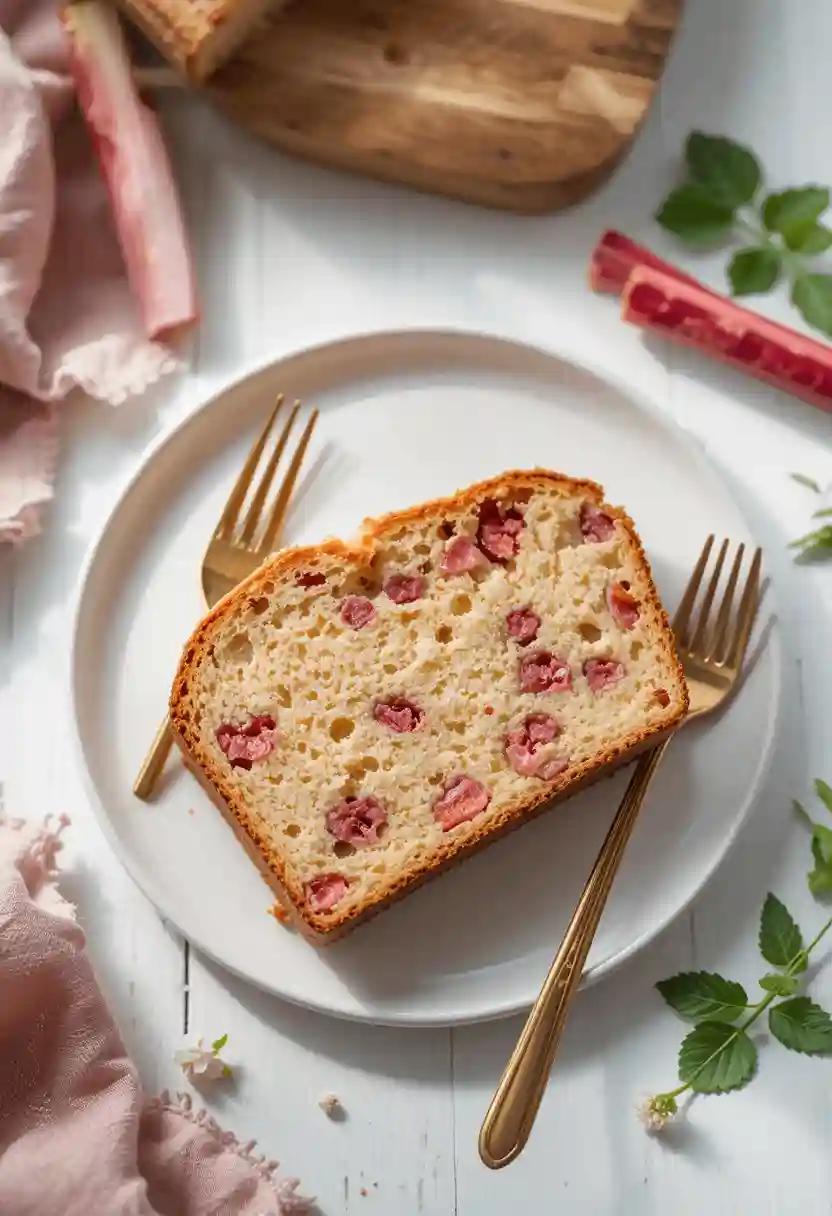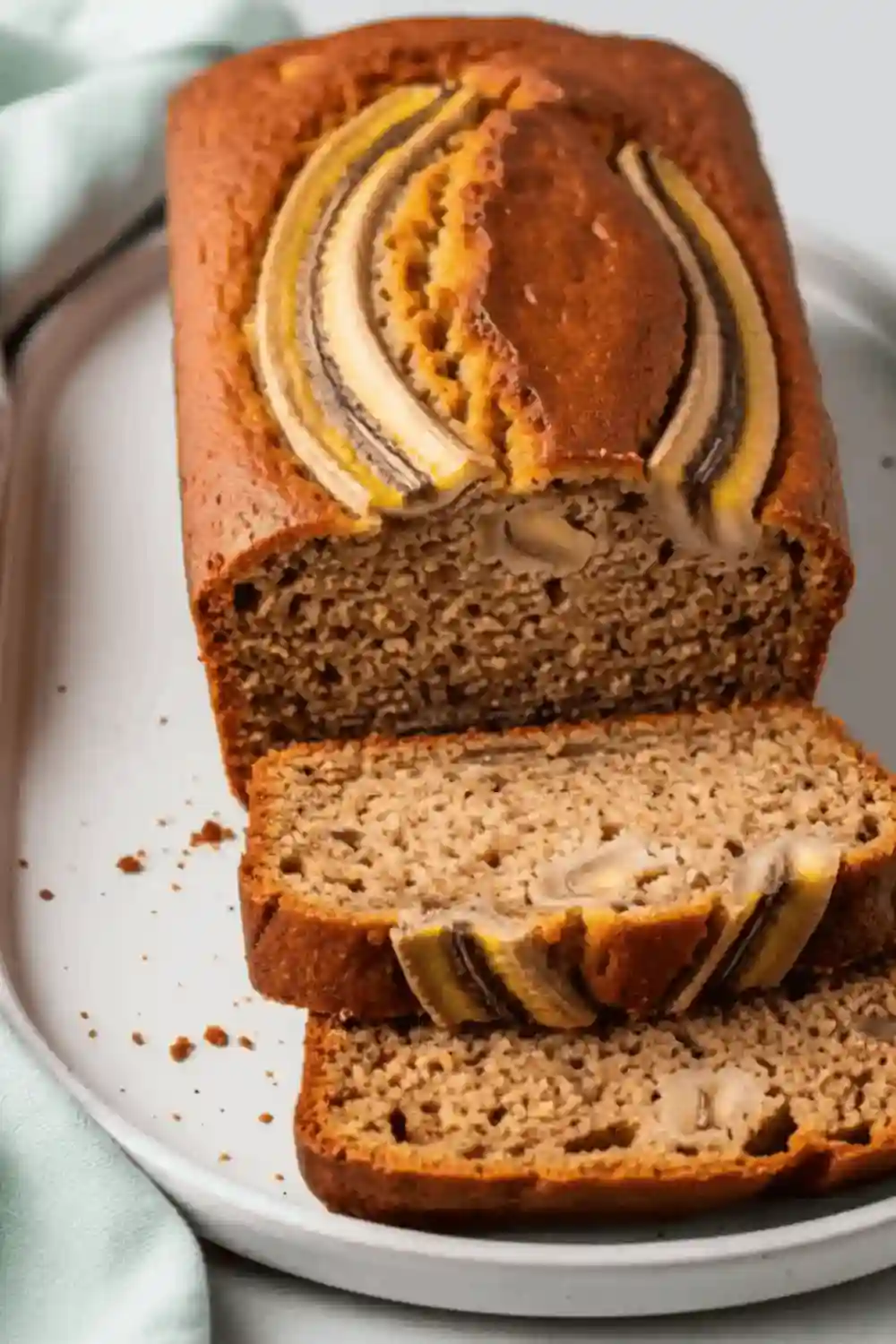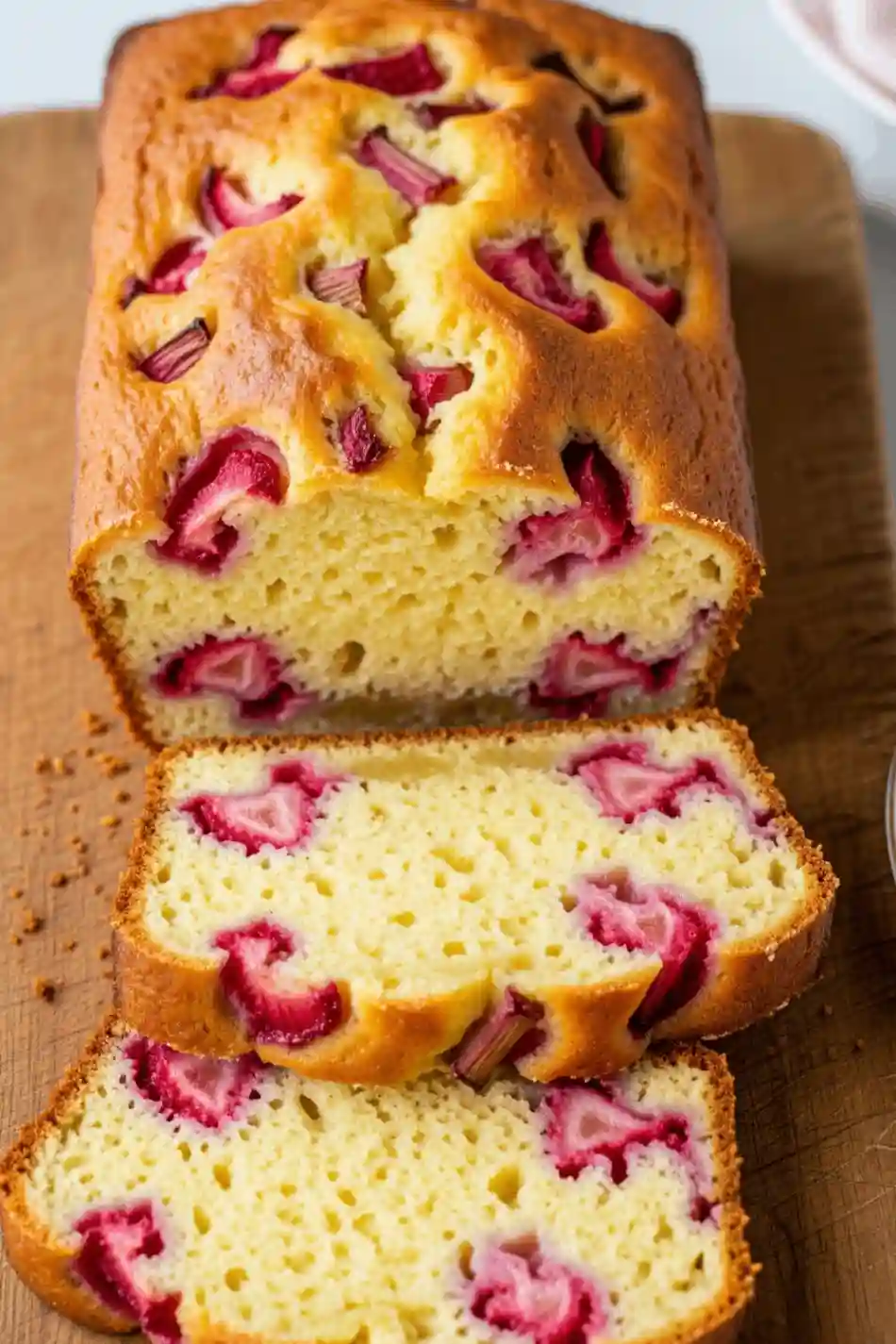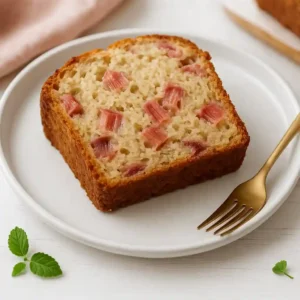Table of Contents
I still remember the first time I baked this Rhubarb Bread Recipe, it felt like a small act of magic in my kitchen. There’s something about the way fresh rhubarb transforms into a tender, slightly tangy bread that instantly lifts your spirits. If you’ve ever wanted a simple recipe that feels like a warm hug, this one’s for you.
When I bake this bread, it’s not just about following a recipe, it’s about slowing down, savoring the moment, and sharing something homemade with people I care about. You’ll find the sweet and tart flavors dance together in a way that’s comforting yet exciting. It’s perfect for mornings when you want a little treat or afternoons paired with a cup of tea.

I want you to feel that same joy when you try it. This rhubarb bread isn’t complicated or fussy. It’s made with everyday ingredients and easy steps that anyone can follow. Whether you’re a seasoned baker or just starting, I promise you’ll find this recipe approachable and satisfying.
So, let’s get ready to create a loaf that fills your home with that irresistible aroma and brings a smile to your face every time you slice it. You deserve to enjoy simple pleasures like this, baking that feels like a moment just for you.
Why You’ll Love This Recipe
For me, the real beauty in baking lies in the simple things, like this easy rhubarb bread that lets the seasonal flavors shine. The moment I spot fresh rhubarb at the market, I know it’s time to bring out my loaf pan and make something cozy and satisfying. This recipe is my go-to when I want a bake that’s comforting without being too sweet.
The flavor of rhubarb changes in the oven, what starts off sharp and tangy becomes soft, mellow, and almost berry-like. It blends beautifully into the batter, adding a bright twist to every slice. I personally love finishing it off with a light sprinkle of coarse sugar before baking, it adds a gentle crunch on top that makes each bite feel special without going over the top.
What makes this bread even more lovable is its texture: soft, slightly crumbly, and perfect for breakfast, snacking, or sharing with a friend over coffee. And if you like a little extra sweetness, you could always drizzle a bit of glaze on top, though honestly, I think it’s lovely just as it is.
If you’re looking for a recipe that feels homemade, cozy, and completely doable, this one’s it.

Ingredients
Fresh Rhubarb: I like to use rhubarb that’s firm and brightly colored, it adds a pop of flavor and color to the bread. Once it bakes, it softens beautifully and adds that signature tart-sweet bite I just can’t get enough of.
Brown Sugar: I always choose brown sugar over white here because it gives the bread a richer, deeper flavor. It gives the bread an extra soft texture, and that’s one of my favorite parts. That hint of molasses does wonders.
Buttermilk: I’m a big fan of using buttermilk when I bake, it always adds a special touch. It gives just the right amount of tang and makes the bread softer and fluffier. If you don’t have it, I’ll share a quick substitute trick in the tips section.
Canola Oil (or Any Light Oil): I use canola for its neutral flavor, but you could go with avocado oil or even melted butter. It keeps the bread moist without being greasy.
Egg: One egg is all it takes to bring everything together. It helps hold the structure while adding a touch of richness. I like to let mine sit at room temperature before mixing.
All-Purpose Flour: I stick with plain flour for this recipe, it gives the bread enough strength to hold the fruit without making it too dense. Just be sure to measure it gently, no packing.
Vanilla Extract: A good splash of vanilla brings warmth and a lovely aroma that fills the kitchen while it bakes. It’s one of those small things that makes a big difference.
Cinnamon (or Your Favorite Spice): I usually go for a pinch of cinnamon to add warmth, but you can swap it out or mix in others like nutmeg, cardamom, or ginger if that’s more your style.
Baking Soda: This little ingredient helps the loaf rise properly. I try to use fresh baking soda because it really does make a difference in the final texture.
Chopped Nuts (Optional): If you’re into a little crunch, toss in some chopped pecans or almonds. They add a nice contrast to the softness of the bread, but it’s totally fine to leave them out if you prefer it smooth.
Recommended Tool
I use a standard 9×5 loaf pan for this recipe, it’s perfect for the right shape and texture. If yours is a bit different, just watch the baking time and test with a toothpick.

Instructions
Step 1: Prepare the wet ingredients
First things first, get your oven warming up to 350°F (175°C). In a mixing bowl, whisk together the brown sugar and oil until smooth. Then, add in the egg, vanilla extract, and buttermilk, mixing until everything is well combined.
Step 2: Combine the dry ingredients
In a separate bowl, mix the flour, baking soda, salt, and cinnamon by sifting them together. Slowly add this to your wet mixture, stirring lightly until everything comes together without overmixing.
Step 3: Fold in the rhubarb and nuts
Carefully stir in the chopped rhubarb and nuts, making sure they’re evenly distributed but avoiding overmixing.
Step 4: Transfer and bake
Pour the batter into a greased 9×5-inch loaf pan (or similar size). Place it in the oven and bake for about 45 minutes, or until a toothpick inserted in the center comes out clean.
Step 5: Cool before serving
Let the bread cool in the pan for around 10 minutes, then transfer it to a wire rack to cool completely before slicing and enjoying.
Variations
Go gluten-free: I’ve experimented with several gluten-free flours that work nicely here. Just keep in mind, some blends perform better than others, so it might take a little trial and error to find your favorite. If you want, I can share some tips to help you get started.
Make it vegan: You can easily swap out the egg and buttermilk to create a vegan-friendly version. I usually use flaxseed “eggs” or applesauce, and replace buttermilk with plant-based milk mixed with a bit of vinegar. It still turns out moist and flavorful.
Add fun toppings or mix-ins: To add a twist, I sometimes sprinkle a crunchy streusel on top before baking or drizzle cream cheese frosting after it cools. You can also serve it alongside your favorite fruit compote for an extra burst of flavor.
How to Store
Once your rhubarb bread has cooled completely, I recommend keeping it whole and fresh by placing it in an airtight container or wrapping it tightly in plastic wrap. I usually keep mine on the countertop where it stays soft and delicious for about three days.
I’ve found that refrigerating bread actually dries it out faster, so I avoid the fridge whenever possible. If you want to keep it longer, freezing is a great option, just wrap it well and thaw slices as you need them.
Try to slice your bread only when you’re ready to eat, it helps keep the loaf moist by limiting its exposure to air. Trust me, this little habit makes all the difference in preserving that fresh-baked taste.
FAQs
Why do people cook with rhubarb?
People cook with rhubarb because its sharp, tart flavor mellows out when combined with sweet ingredients and heat. Baking it into things like bread, cake, or jam transforms its bitterness into a pleasantly tangy taste that pairs well with desserts.
Can rhubarb be dehydrated?
Yes, rhubarb can be dehydrated, even without a dehydrator. You can simply use your oven set to a very low temperature to dry out the pieces slowly.
Can I freeze rhubarb?
Yes, you can freeze rhubarb. Just wash and chop it into pieces, then spread them out on a tray to freeze individually before transferring to a sealed container or freezer bag. This keeps the pieces from sticking together and makes it easy to grab what you need later.
Is rhubarb a fruit or vegetable?
Rhubarb is technically a vegetable, though it’s often used like a fruit in cooking. Its stalks are usually sweetened and baked into desserts like pies and crumbles.
How do you reduce the acidity in rhubarb?
To cut down the acidity in rhubarb, you can mix in a small amount of baking soda while baking, it helps mellow out the tartness.

Rhubarb Bread Recipe
Ingredients
- 180 g light brown sugar: I prefer this over white sugar for that deeper caramel-like sweetness that pairs beautifully with rhubarb.
- 150 ml canola oil: You can use any light oil here but I always go with canola for its neutral flavor and smooth texture.
- 1 large egg: Make sure it’s at room temperature. I like to beat the egg separately in a small dish before mixing it in.
- 1 tsp vanilla extract: Just a splash brings warmth and depth to the loaf.
- 240 ml buttermilk: This keeps the bread moist and adds a gentle tang. If you’re out don’t worry, I’ll tell you how to make a quick substitute.
- 310 g all-purpose flour: I measure mine by spooning into the cup and leveling it off never pack it in!
- ½ tsp sea salt: A small pinch enhances all the flavors without making the bread salty.
- ½ tsp ground cinnamon: For a cozy touch of spice.You can switch things up by adding a dash of nutmeg or cardamom if you’re in the mood to experiment with flavor.
- 1 tsp baking soda: Helps the bread rise perfectly and stay light.
- 2 heaping cups of fresh rhubarb finely chopped: I aim for ¼-inch pieces. The smaller cuts melt into the bread better, giving little bursts of flavor in every bite.
- 60 g chopped pecans or walnuts optional: I love adding a handful for a little crunch, but skip them if you prefer a smoother texture.
Instructions
- Warm up the oven: Go ahead and preheat your oven to 175°C (350°F). I always like to do this first so it’s ready when the batter is. Lightly grease a standard 9×5-inch loaf pan or line it with parchment for easy removal.
- Mix the wet ingredients: In a large mixing bowl, combine the brown sugar and oil until smooth, I use a whisk or wooden spoon. Mix in the egg, vanilla, and buttermilk, and stir until the mixture becomes smooth and evenly combined.
- Prepare the dry mix: In another bowl, whisk together the flour, baking soda, salt, and cinnamon. This helps evenly distribute the baking soda and spice so you don’t end up with clumps.
- Bring it all together: Slowly stir the dry ingredients into your wet mixture. Don’t overmix, it’s totally fine if the batter looks a little lumpy. I’ve learned that a gentle hand makes softer bread.
- Fold in the good stuff: Gently fold in your chopped rhubarb and nuts (if using). I like to do this with a spatula so the rhubarb stays intact and spread evenly throughout.
- Bake and cool: Carefully transfer the batter into your greased loaf pan, then gently level the surface. Let it bake for 40 to 50 minutes, or until a skewer inserted into the middle comes out without any wet batter. Let it rest in the pan for 5-10 minutes, then transfer it to a wire rack to cool completely before slicing.
Notes
Nutrition:
- Calories: 130 kcal
- Total Fat: 7g
- Saturated Fat: 1.2g
- Cholesterol: 8mg
- Sodium: 130mg
- Carbohydrates: 37g
- Fiber: 1.5g
- Sugars: 9g
- Protein: 4g

